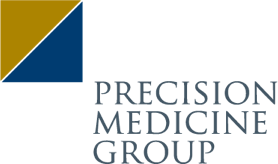Exploring the Mysterious PBM-GPO Model
By Ashwin Athri
As large pharmacy benefit managers (PBMs) create group purchasing organizations (GPOs) to manage the regulatory risk and transition to administrative fees as a source of revenue rather than manufacturer rebates, there is a lot of mystery surrounding the operation of these new entities. Some questions being considered by pharma to determine contracting and other market access strategies include how much control these organizations already exhibit, and how many PBM clients are impacted.
Ascent Health (Express Scripts), Zinc (CVS), and now Emisar (OptumRx) are the 3 leading GPO initiatives, with Ascent being the first mover among them. Given the relative (short) history of Ascent, we wanted to look a little deeper into the organization to explore what we can glean from the broader market data.
Not only is this model limited to the parent PBM’s business, but we are now observing a coalition of health plans and PBMs further aggregating the member base. Express Scripts’ Ascent Health collaborated with Prime Therapeutics to increase its member footprint such that it can leverage it in negotiations with pharmaceutical manufacturers. We wanted to observe its impact on downstream clients and the various books of business to better understand the scale. The comparison from 2019 to 2020 sheds some light on this evolving business mix.
Large PBM clients have an outsized impact on the GPO footprint, and this is further emphasized as the model now scales across PBMs. The flip side of increasing the footprint is that it can lead to increased volatility in the underlying member base that is not in direct control of a PBM. The network just got more interconnected and maybe not in a good way. To understand this in a recent example, Ascent Health would have lost the member base from Walmart (~1 million members) and Lockheed Martin (~400,000 members) as they moved to use Optum and CVS, respectively, for their PBM services.
Prime’s addition to the member base of Ascent not only brought the commercial health plans into the mix but also a led to a 150% increase in the health exchange (HIX) book, adding about ~2.5 million members, with Florida Blue Cross Blue Shield bringing in ~1 million HIX members. This helps diversify the member base for Express Scripts that traditionally did not have a large health exchange base. We also start to see Cigna’s health exchange plans as part of Ascent in 2020, suggesting a sequential roll out of the program across Express Scripts/Cigna’s broader business mix.
The impact of client base for the PBM is also observed in the health plan market as we see Ascent lose the Anthem plans, as they move to their home-grown PBM IngenioRx, which interestingly doesn’t yet have a GPO play and potentially may be partnering with Zinc (CVS).
With the addition of WellDyne, Navitus, and Humana to Ascent’s roster, the landscape continues to evolve and get more complex to model. Some of the questions that the new model shines a light on are:
- What is the impact on the small to mid-sized retail pharmacies with another middleman in the mix?
- What is the impact on large retail chains such as Walgreens?
- How much of the administrative fee makes its way back to the sponsors?
- What is the true value add of the administrative fee?
- Does this really pass the fair market value (FMV) test for excluding from average manufacturer price (AMP) and Medicaid best price calculation?
- Will there be a spill over into Medical benefit management?
With Precision’s Payer Master, finance and analytic teams can now connect the rebate submissions and enrollment files from GPOs, PBMs, and health plans to other syndicated data sources such as distribution, formulary coverage, covered lives, TRx, and claims to create a rich analytic ready data set that can support complex market access use cases.
Teams can also use the Payer Master with third-party data to flag GPO participation to better understand which employers are participating, how many health plans are in the business mix, and track the evolving nature of the GPO-PBM landscape. Reach out to see how the Payer Master can help you unlock the insights hidden in your data.
Click here to learn more about the Precision Payer Master!



